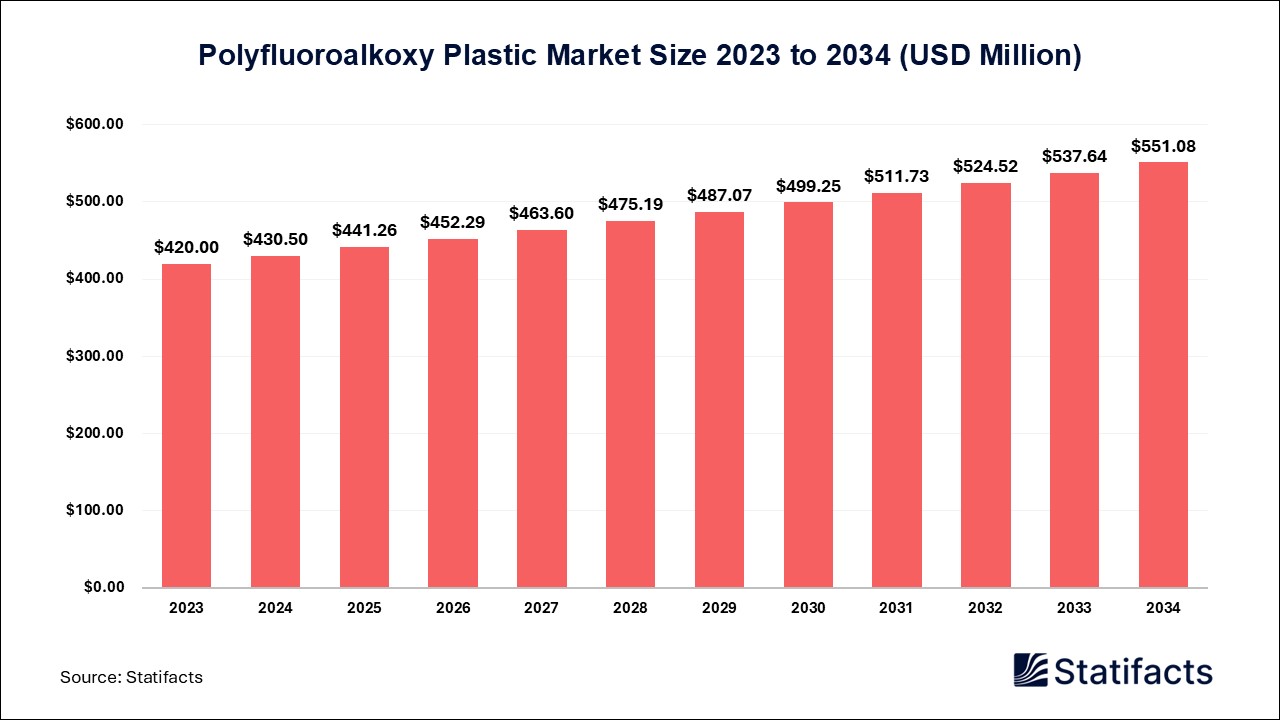Last Updated: 21 Jul 2025
Source: Statifacts
By clicking “Accept All Cookies” you agree to the storing of cookies on your device to enhance site navigation, analyze site usage, and assist in our marketing efforts.
Privacy PolicyUS Automotive Body Electronics Market (By Application: Audio, Display, Navigation, Head-up Display, Communication) Industry Size, Share, Growth, Trends 2025 to 2034.
The US automotive body electronics market size accounted for USD 10.97 billion in 2024 and is predicted to touch around USD 20.76 billion by 2034, growing at a CAGR of 6.58% from 2025 to 2034. The market is expanding rapidly due to a variety of drivers like demand for electric vehicles (EVs), increased consumer focus on safety, comfort, and convenience features, and development in vehicle-to-everything (V2X).
| Industry Worth | Details |
| Market Size in 2025 | USD 11.74 Billion |
| Market Size by 2034 | USD 20.76 Billion |
| Market Growth Rate from 2025 to 2034 | CAGR of 6.58% |
US automotive body electronics are electronic systems used to control any of the vehicle functions, such as occupant lighting, central locking, climate control, mirrors, and infotainment. The utility of body electronics is vital to enhancing driver and passenger convenience, comfort, safety, and vehicle efficiency. In the U.S., body electronics can be found on almost all types of vehicles, but are used mainly on passenger cars, light commercial vehicles, and electric vehicles.
The market is growing as manufacturers use body electronics to enhance Advanced Driver-Assistance Systems, autonomous driving modules, and upcoming smart cockpit technologies. For instance, as reported by the U.S. Department of Energy, it is estimated that there were over 1.3 million electric vehicles on U.S. roads in 2023, and all those vehicles (in addition to others) needed a sophisticated body electronic system to manage the internal systems and to connect to networks and external systems. Two huge drivers of growth in the U.S. automotive body electronics market include the increasing demand for greater connectivity and personalization, as well as digital interfaces. As a result, original equipment manufacturers (OEMs) are focusing on providing an evolving consumer experience using body electronics that will be critical in electric vehicles (EVs) and luxury cars.
Artificial intelligence is critically changing body electronics in automotive. Unlike other electronic components, automotive body electronics will bring predictive maintenance, personalization, and smart decision-making inside the vehicle. AI algorithms can optimize climate control systems based on passenger behaviors and environmental conditions, increasing efficiency, energy while considering passenger comfort. In infotainment systems, AI can augment conventional voice recognition with naturally adaptive interfaces, increasing driver engagement and situational awareness. OEMs like Tesla, General Motors, and automotive supplier Bosch are the first to launch autonomous features, with AI automating the lighting system through individual and/or passive knowledge systems, and that is computing driver behavior through cabin-facing cameras. Predictive maintenance/ user experience information is not only driven by the technology that plays a large part in improving these user experiences, but is also intersectional with Federal safety standards for features and automation. AI, auto follow for ECUs, OTA (over-the-air) updates, and uniqueness of data-driven diagnostics can not only lower the expenses of long-term maintenance, but the owner experience can also enhance vehicle uptime.
Rising demand for EVs and smart infrastructure The growth in adoption of electric vehicles in the U.S. market is a substantial opportunity to drive the demand for body electronics because of the more complex electronic architecture required for energy delivery, cabin control, and vehicle interaction of these energy vehicles. Due to the increased investment in production capacity and infrastructure, we are rapidly transitioning to electric vehicle production as an advanced technology sector. This transition requires energy-efficient innovations in body electronics, such as regenerative braking indicators, smart HVAC systems for controlling cabin climate with consideration of energy efficiency, and highly efficient battery cooling systems. In addition, smart charging infrastructure and V2G (vehicle-to-grid) charging systems both rely on advanced electronics. As more and more original equipment manufacturers (OEMs) begin with EV platforms, the demand for integrated, efficient, and AI-enabled body electronic systems will continue to increase.
Increasing consumers' preference for comfort, safety, and customization Consumers in the U.S. are increasingly looking for vehicles equipped with premium content like automatic climate control, adaptive lighting, remote locking/unlocking, and connectivity and entertainment systems, each of which is dependent on increasingly more complex body electronics. This trend is most apparent in the luxury and upper-middle segments of the industry and will continue to be adopted by mid-range products (gestures, voice commands, multiple zone HVAC), according to J.D. Power’s 2024 report, a survey which revealed that 73% of buyers of new cars in the U.S. market prioritize in-car technology and comfort systems over performance which is having a lasting impact on the automotive market and will have implications for the ongoing investment by automakers in vehicle body electronics. Vehicle manufacturers have also initiated strategic planning and development based on highly scalable metrics of body electronics systems to allow for greater personalization and safety while maintaining parameters of system reliability.
Increasing cybersecurity concerns As body electronics systems continue to be interconnected and data-driven, they become more susceptible to cyberattacks. In the U.S., there is increased concern around vehicle hacking and the unauthorized access of electronic control units (ECUs), creating risks to safety-critical systems that include locking/unlocking doors and controlling lighting. The National Highway Traffic Safety Administration (NHTSA) has started numerous initiatives focused on this concern but OEMs continue to be faced with challenges to construct security frameworks that protect these systems, not to mention the obstacles of complying with evolving cybersecurity laws and standards from the lack of standardized protocols across manufacturers to develop and integrate secure body electronics in the first place, limiting their deployment in vehicles.
Supply chain disruptions and semiconductor shortages The U.S. automotive sector is realizing the effects of supply chain interruptions, particularly in the availability of body electronics, microcontrollers, and semiconductors. The CHIPS Act aims to increase domestic semiconductor production; however, the gap between demand versus supply still exists an impact on manufacturing schedules. Automakers are denying schedule builds, not to mention features, due to the unavailability of certain components. Although the first impact of vehicle sales and delivery, consumer confidence in the availability of a vehicle with technology in today’s economy may be the long-term impact.
One primary opportunity is the emergence of centralized zonal architectures in vehicles, which centralize body electronic functions for operational efficiency and ease of software updates. This transition enhances the demand for OTA updates and centralized computing. Another major opportunity is increased usage and need for aftermarket applications of smart body electronics, including retrofit infotainment and climate control systems, and advanced lighting for older vehicles on the U.S. market. As vehicles continue to be owned longer and average vehicle age exceeds 12 years in the U.S., aftermarket electronics demand will continue to be in steady demand.
“OEMs and tier 1s have faced the challenge of either consolidating multiple applications within legacy microcontrollers or deploying excessive redundant computing power to achieve application independence. The NXP platform allows developers to quickly implement SDV features for advanced real-time applications. The S32E2 enables the efficient integration of numerous applications within an easy-to-debug environment, where task isolation and determinism are inherent to the design.”
“Without Advanced Control Modules, there will be no automated driving. This development toward software- and service-oriented vehicle architectures opens up a completely new, promising market. FORVIA HELLA has been active in the demanding body electronics business for over 25 years and produces over 13 million control units annually. This gives us a strong technological foundation today. The recent major contract from another premium manufacturer underlines our position as an innovation leader.”
Why is the display segment dominant and expected to grow at the fastest rate in the U.S. automotive body electronics market?
In the U.S. automotive body electronics market, the display segment was the dominant one due to an aggressive increase in infotainment systems integrated into vehicles, as well as the digital instrument clusters and central control units in mid- to high-tiered vehicles, and is anticipated to grow at the fastest CAGR. Consumer demand for touch-enabled and customizable interfaces increased rapidly, especially in luxury vehicles. Automakers, such as Tesla and Ford, were focused on the driver experience by increasing the size and resolution of displays within vehicles, which enhanced existing navigation and connectivity options. More importantly, the integration of vehicle diagnostics and entertainment systems drove the largest part of display unit demand. The National Transportation Safety Board noted that visual alerts, driven largely by a display, were increasing to enhance driver safety, which only solidified the display segment to be the greatest in the automotive electronics market.
Why is the head-up display segment anticipated to grow at a notable rate in the U.S. automotive body electronics market?
Head-up displays (HUDs) are expected to grow at a considerable rate in the U.S. automotive body electronics market due to increased attention from both consumers and OEMs on driver safety and situational awareness. HUD systems project relevant driving information such as speed, navigation, and alerts onto the driver's windshield, allowing drivers to stay informed with their glance remaining on the road. As various driver assist and automated technologies become ubiquitous across vehicle segments, manufacturers are including HUDs in more and more mid-range vehicles. General Motors and Hyundai have expanded HUD usage to models that are not luxurious. Additionally, continued advancements in augmented-reality (AR) based HUD technologies are generating OEM investment that will lead to new and further adoption of these systems in electric vehicles and internal-combustion engine vehicles.
The U.S. Automotive Body Electronics Market is highly competitive, filled with several key players in the market holding significant shares. Some of the key players in the market are Technica Engineering Inc., Movimento, Intrepid Control Systems, MEMA Aftermarket Suppliers, Bosch, Continental, Denso, Aptiv, and Texas Instruments.
The market contains several players, but the companies holding a prominent position in the market are:
Magna is a supplier of automotive body electronics, such as electronic door modules, smart mirrors, and lighting systems. Magna supports U.S. OEMs with advanced electronics that have enabled technology like EVs, connected vehicles, and zonal architecture. Magna operates in over 25 different countries.
Texas Instruments is a semiconductor supplier, specifically for automotive body electronics. Its offerings include LED drivers, display controllers, and power ICs. Texas Instruments powers the lighting, infotainment, and climate systems for U.S. vehicles with its electronic components, where leading automotive OEMs can design their electronic systems in a scalable, efficient way.
Intrepid is a provider of vehicle network tools and diagnostics that support the testing and validation of automotive body electronics. They offer ECU communication solutions, data logging, and simulation, and are a valuable tool to help U.S. OEMs create reliable and secure vehicle electronic systems
| Segments | Shares (%) |
| Audio | 30% |
| Display | 25% |
| Navigation | 20% |
| Head-up Display | 10% |
| Communication | 15% |
Published by Ajit Bansod
| Application | 2024 | 2025 | 2026 | 2027 | 2028 | 2029 | 2030 | 2031 | 2032 | 2033 | 2034 |
|---|---|---|---|---|---|---|---|---|---|---|---|
| Audio | 0.97 | 1.04 | 1.09 | 1.15 | 1.21 | 1.30 | 1.38 | 1.46 | 1.56 | 1.68 | 1.78 |
| Display | 2.78 | 2.94 | 3.14 | 3.36 | 3.59 | 3.83 | 4.07 | 4.36 | 4.62 | 4.91 | 5.27 |
| Navigation | 0.71 | 0.75 | 0.80 | 0.85 | 0.91 | 0.97 | 1.03 | 1.09 | 1.15 | 1.23 | 1.31 |
| Head-up Display | 1.47 | 1.57 | 1.68 | 1.81 | 1.94 | 2.09 | 2.26 | 2.42 | 2.60 | 2.79 | 2.97 |
| Communication | 5.04 | 5.39 | 5.74 | 6.11 | 6.50 | 6.90 | 7.34 | 7.80 | 8.33 | 8.85 | 9.42 |
Last Updated: 21 Jul 2025
Source: Statifacts
| Subsegment | 2024 | 2025 | 2026 | 2027 | 2028 | 2029 | 2030 | 2031 | 2032 | 2033 | 2034 |
|---|---|---|---|---|---|---|---|---|---|---|---|
| Audio | 0.97 | 1.04 | 1.09 | 1.15 | 1.21 | 1.30 | 1.38 | 1.46 | 1.56 | 1.68 | 1.78 |
| Display | 2.78 | 2.94 | 3.14 | 3.36 | 3.59 | 3.83 | 4.07 | 4.36 | 4.62 | 4.91 | 5.27 |
| Navigation | 0.71 | 0.75 | 0.80 | 0.85 | 0.91 | 0.97 | 1.03 | 1.09 | 1.15 | 1.23 | 1.31 |
| Head-up Display | 1.47 | 1.57 | 1.68 | 1.81 | 1.94 | 2.09 | 2.26 | 2.42 | 2.60 | 2.79 | 2.97 |
| Communication | 5.04 | 5.39 | 5.74 | 6.11 | 6.50 | 6.90 | 7.34 | 7.80 | 8.33 | 8.85 | 9.42 |
Demand is rising due to consumer expectations for enhanced safety and comfort features, such as smart lighting, advanced climate control, and connected services, alongside regulatory mandates and the shift toward electric and autonomous vehicles.
AI-powered systems like driver monitoring, predictive maintenance, and adaptive cabin settings are becoming widespread, enabling smarter and safer in-cabin experiences while improving system uptime.
The complexity of integrating over 100 ECUs and the need for rigorous safety compliance (e.g., ISO 26262), combined with cybersecurity threats and rising electronics content costs, pose significant hurdles for both OEMs and suppliers.
Electrification enables the adoption of flexible and printed electronics, such as curved OLEDs, in-seat thermal systems, and transparent sensors, for lighter, more efficient, and visually seamless vehicle interiors.
Major tier-1 suppliers like Bosch, Continental, Denso, and ZF lead the sector, alongside electronics/software leaders like NVIDIA and Microsoft. Innovative OEMs such as Mercedes are integrating advanced platforms combining AI, edge computing, and connectivity features.
To get full access to our Market Insights, you need a Professional Account or a Business Suite.

You will receive an email from our Business Development Manager. Please be sure to check your SPAM/JUNK folder too.

You will receive an email from our Business Development Manager. Please be sure to check your SPAM/JUNK folder too.

Our customers work more efficiently and benefit from



